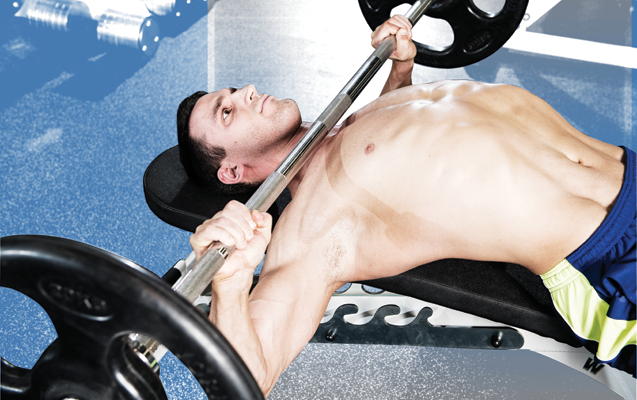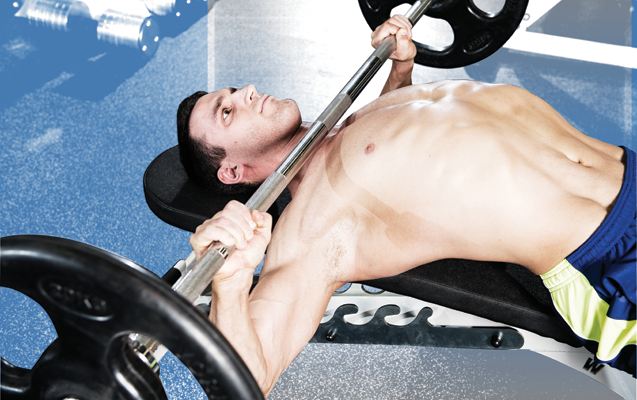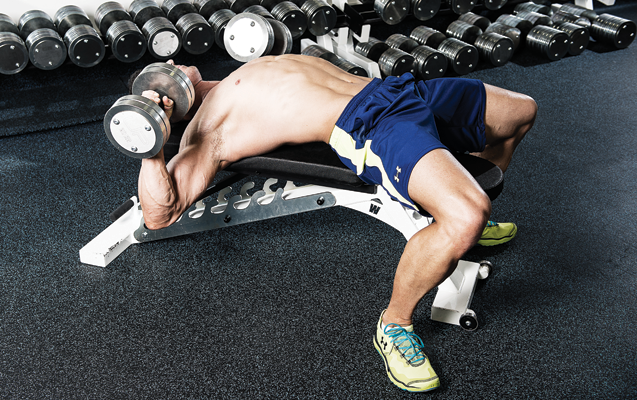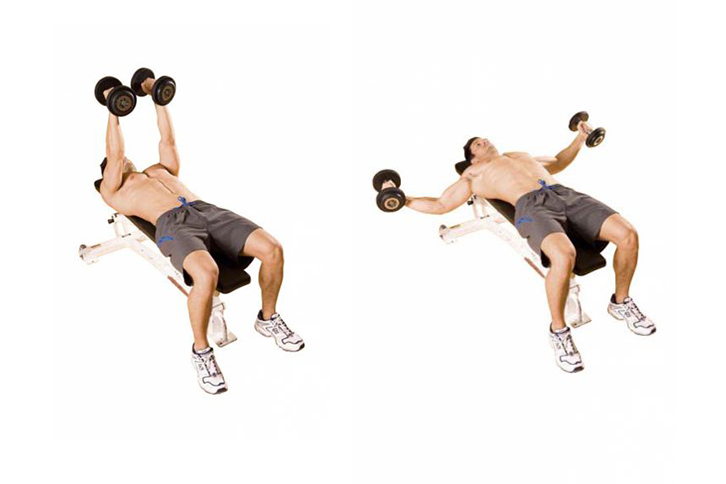Work Your Upper Chest With The Guillotine Press
Tweak the common bench press and add it to your workout for a bigger, stronger upper chest

The bench press is commonly man’s gateway lift into resistance training. Everyone talks about it. It’s how gym bros measure themselves against the competition. But, as with all exercises, get too efficient at it and it stops being an effective way to get fitter or pack on more muscle. If your strength has plateaued or your chest isn’t getting any more voluptuous despite dedication to the bench, it’s time to shake up the lift.
RECOMMENDED: Chest Workouts
“I see men bench pressing more than any other move in an attempt to get a big chest, but this is a mistake,” says trainer Nick Mitchell, founder of Ultimate Performance. “This is because the limited range of motion of a standard bench press – in which the bar stops at your chest – restricts the number of muscle fibres that can be activated, limiting muscular stimulation and development. But don’t worry – a simple alteration to the classic move makes the target muscles work harder than they’ve done before, so you get bigger and stronger fast.” Where do we sign up?
The Guillotine Press

This move is actually very similar to a standard flat bench press. The difference comes from the fact you lower the bar carefully down towards your Adam’s apple and not your mid-chest. If done correctly, it will force your pecs to grow. If done incorrectly you might have a sore throat for a bit.
“Lowering the bar towards your neck allows the chest muscles to move through a greater range of motion and you get a bigger stretch at the bottom of each rep,” says Mitchell. “This forces your pec major and minor to perform actions they wouldn't during a typical bench press.”
- Lie on the bench with your feet on the floor, directly underneath your knees.
- Your head, upper back and glutes should be flat against the bench. Brace your core and maintain a natural arch in your back.
- Hold the bar with an overhand grip slightly wider than shoulder-width apart.
- Slowly lower the bar towards your neck, until your elbows are bent at 90° and the bar is almost touching you.
- Drive your feet hard into the floor and push the bar back strongly to the start position.
- As with all barbell exercises in which you’re trying to stimulate chest development, focus on pulling your arms inwards as you press up and lower the weight.
RECOMMENDED: The Only Home Chest Workout You're Ever Going to Need
Make It Easier: Dumbbell Neck Press

If you're not confident enough to do the guillotine press without beheading yourself start with the dumbbell neck press. This exercise mimics the guillotine press in that it increases the range of motion and recruits more muscle fibres. However, dumbbells are easier to control than a barbell, making this a great gateway move to the advanced version.
Get the Coach Newsletter
Sign up for workout ideas, training advice, reviews of the latest gear and more.
- Lie on a flat bench holding a dumbbell in each hand at shoulder height.
- Keep your feet flat on the floor and your upper back against the bench.
- Press the weights directly above your head but don’t lock out your elbows at the top.
- Slowly lower the weight towards the top of your chest, flaring your elbows out to the sides.
RECOMMENDED: Pectoral Exercises
Make It Harder: Dumbbell Flye Superset

Rather than simply adding more weight or reps to the barbell guillotine press it’s more effective and safer to superset it with a different chest move. You don’t want to go too heavy or too close to complete failure with the guillotine press given its proximity to your neck and the vulnerability of your shoulders in this position. Instead, follow it with an immediate set of flyes will target more muscles in your chest and the supporting stablisers in your deltoids and arms for greater all-round growth.
- Lie on a bench with a dumbbell in each hand.
- Bend your arms slightly, bring them up to meet above your chest.
- Squeeze them together at the top before slowly lowering them to the sides until you feel a slight stretch in your pecs.
Coach is a health and fitness title. This byline is used for posting sponsored content, book extracts and the like. It is also used as a placeholder for articles published a long time ago when the original author is unclear. You can find out more about this publication and find the contact details of the editorial team on the About Us page.

